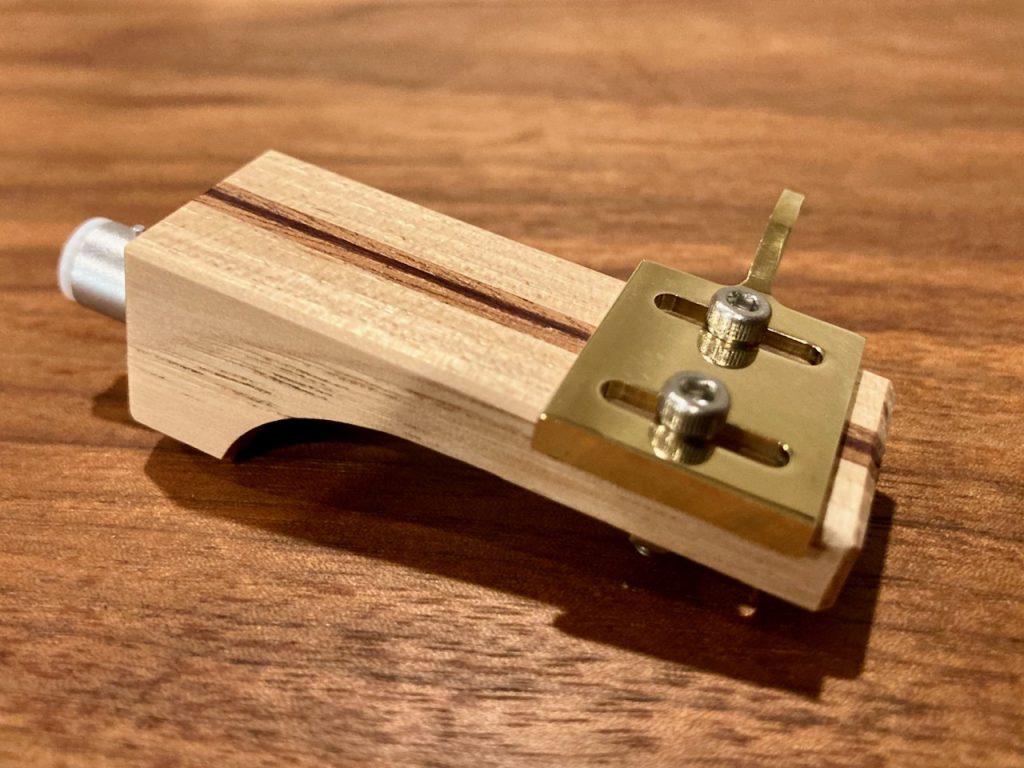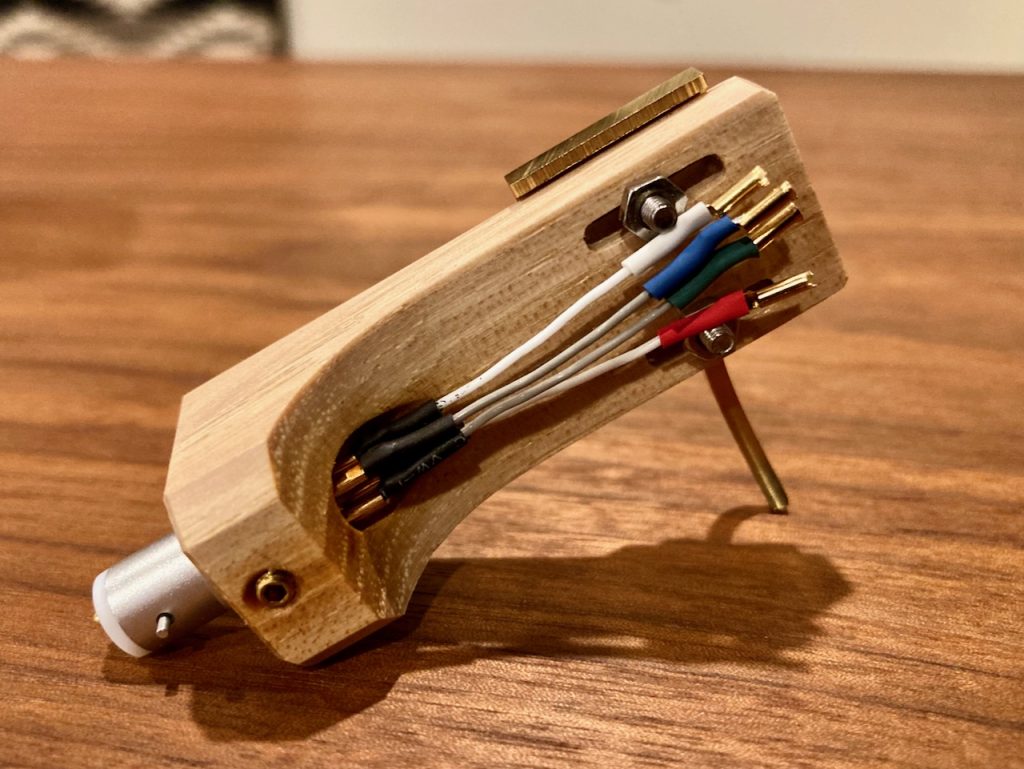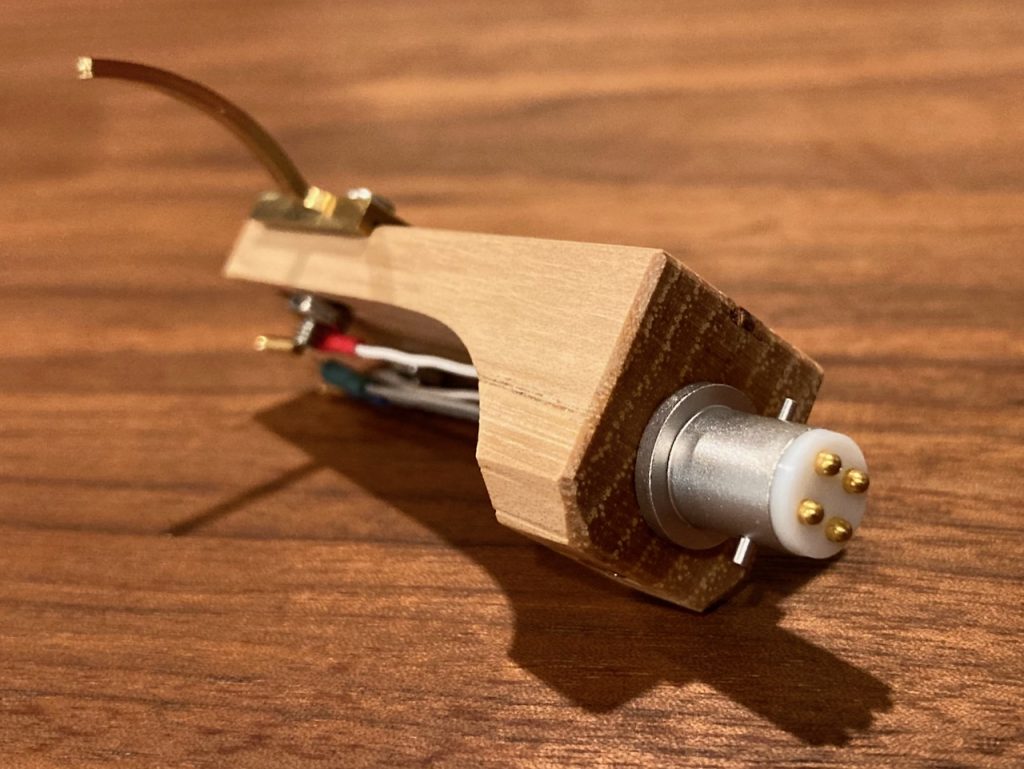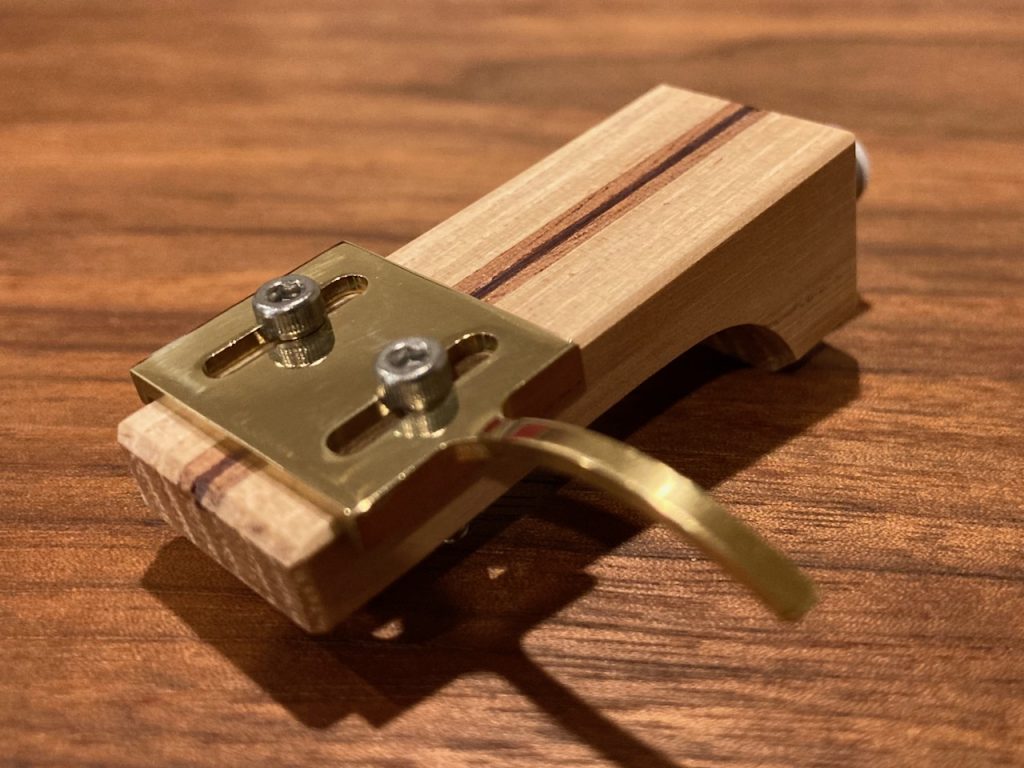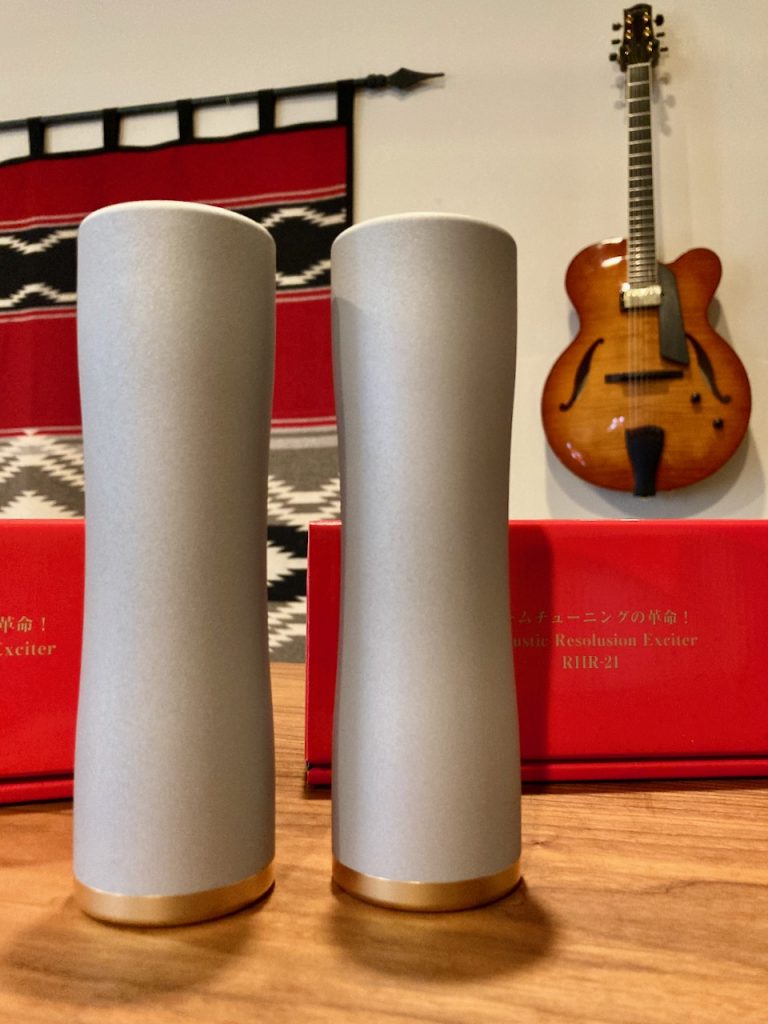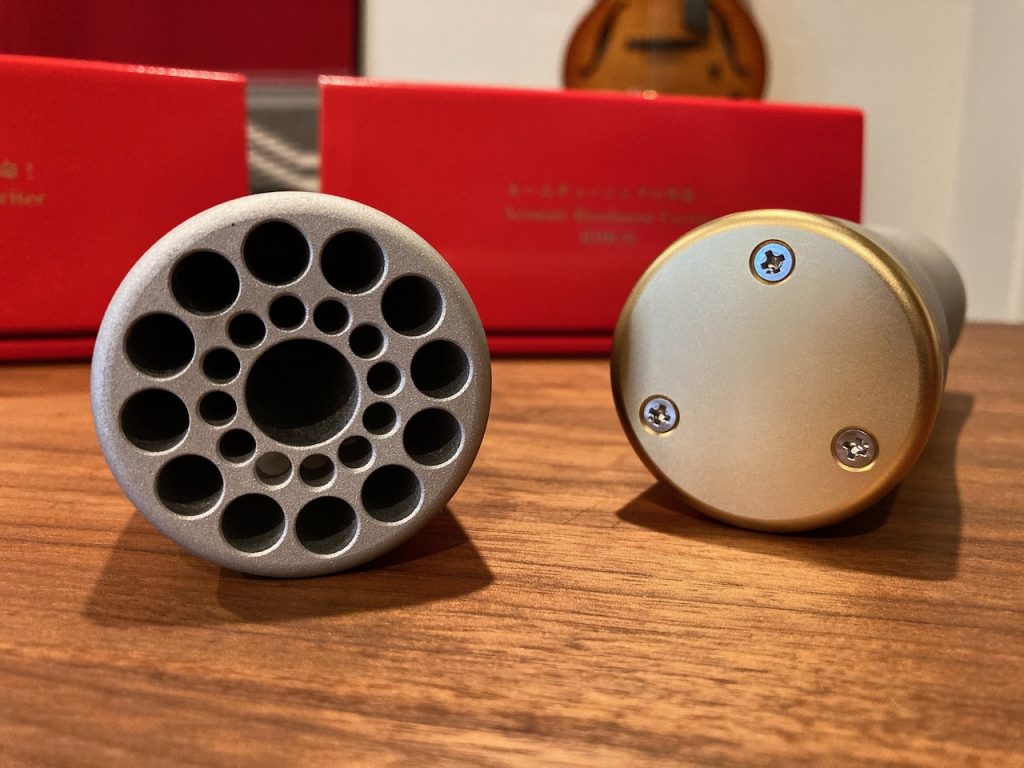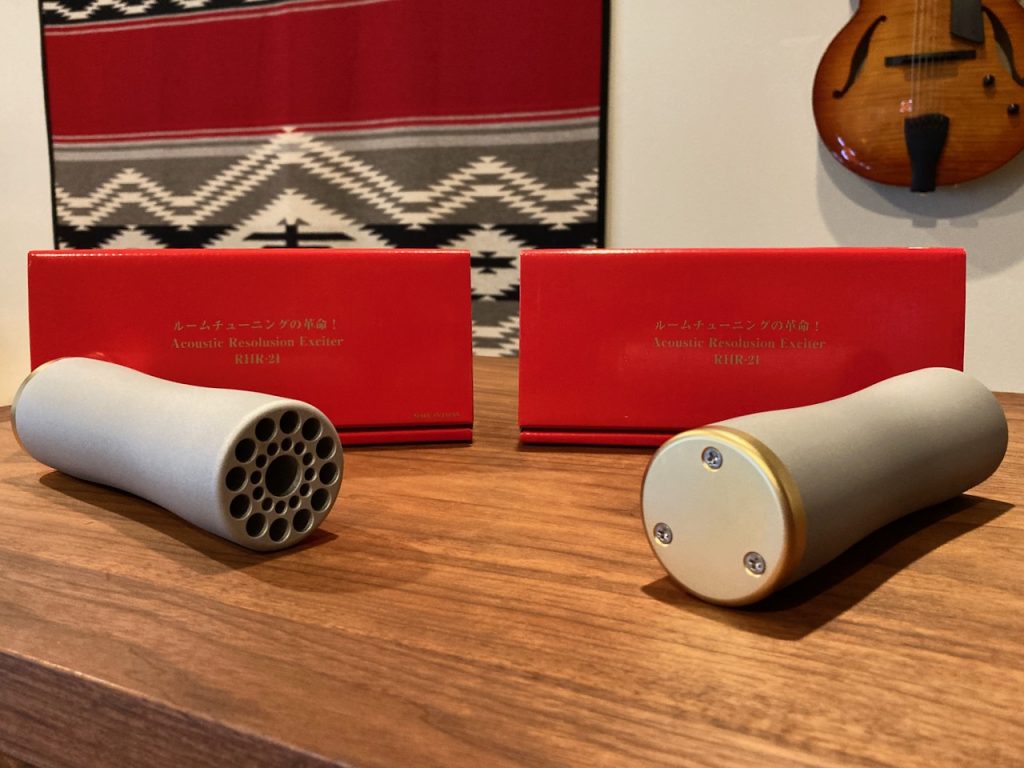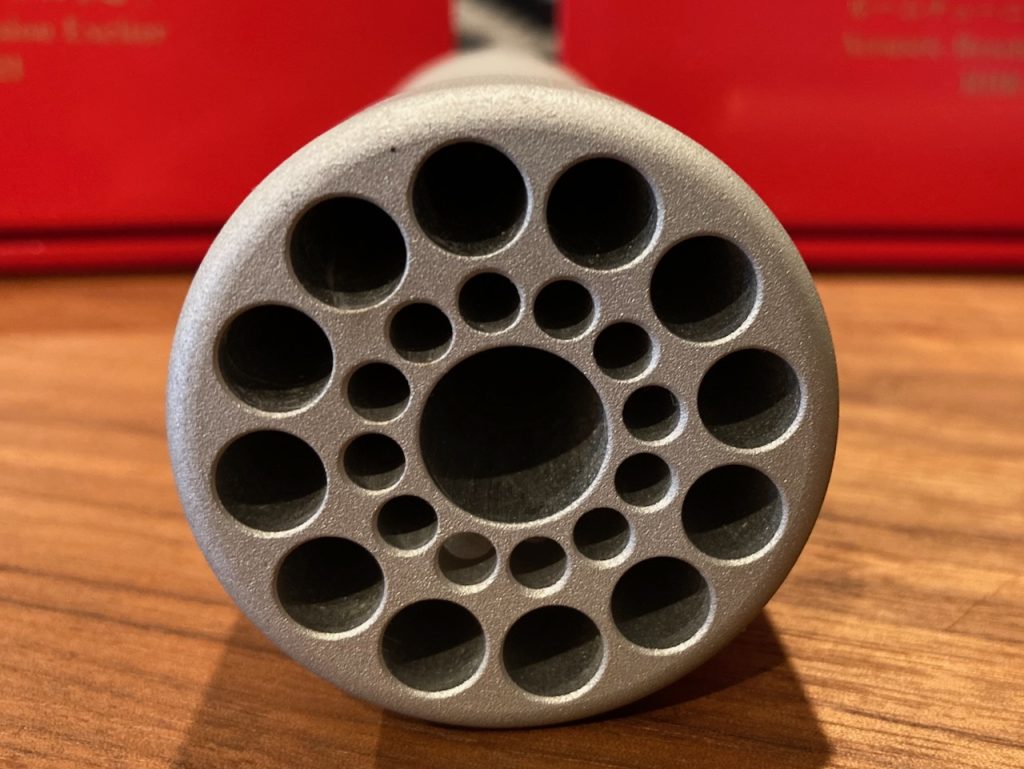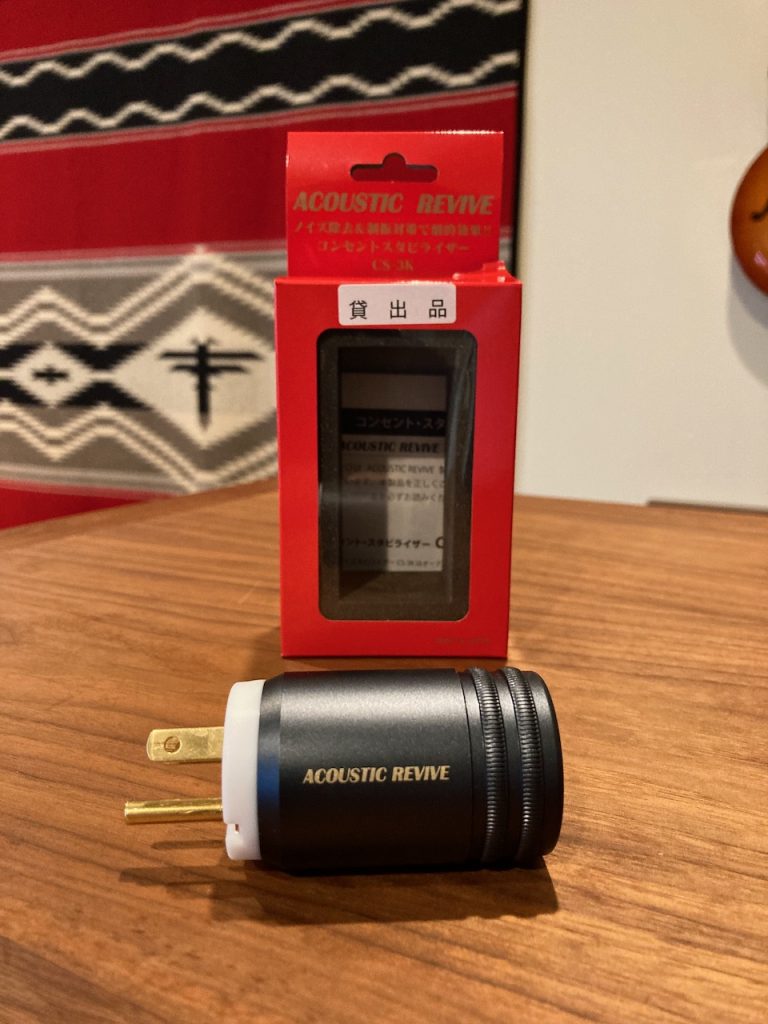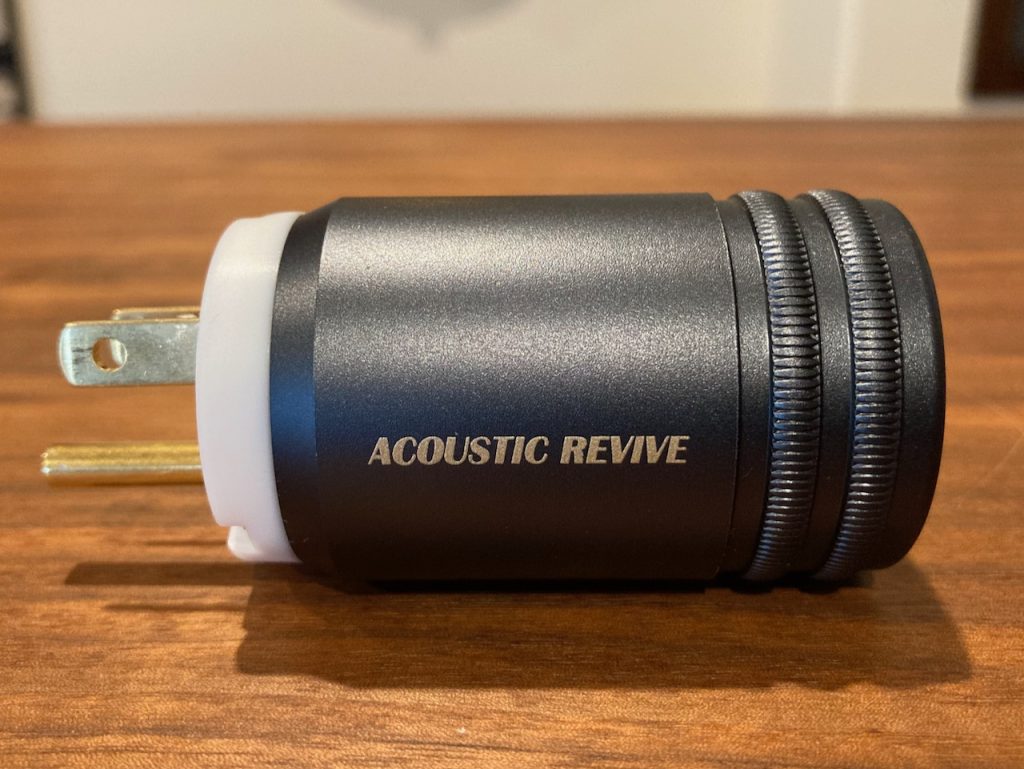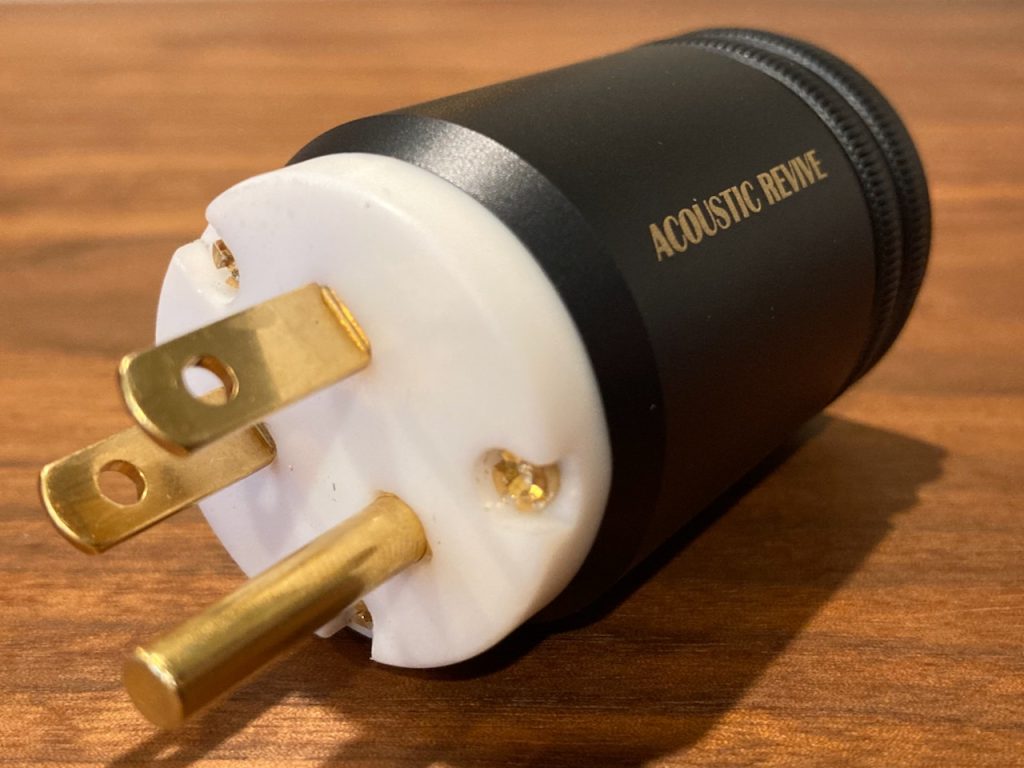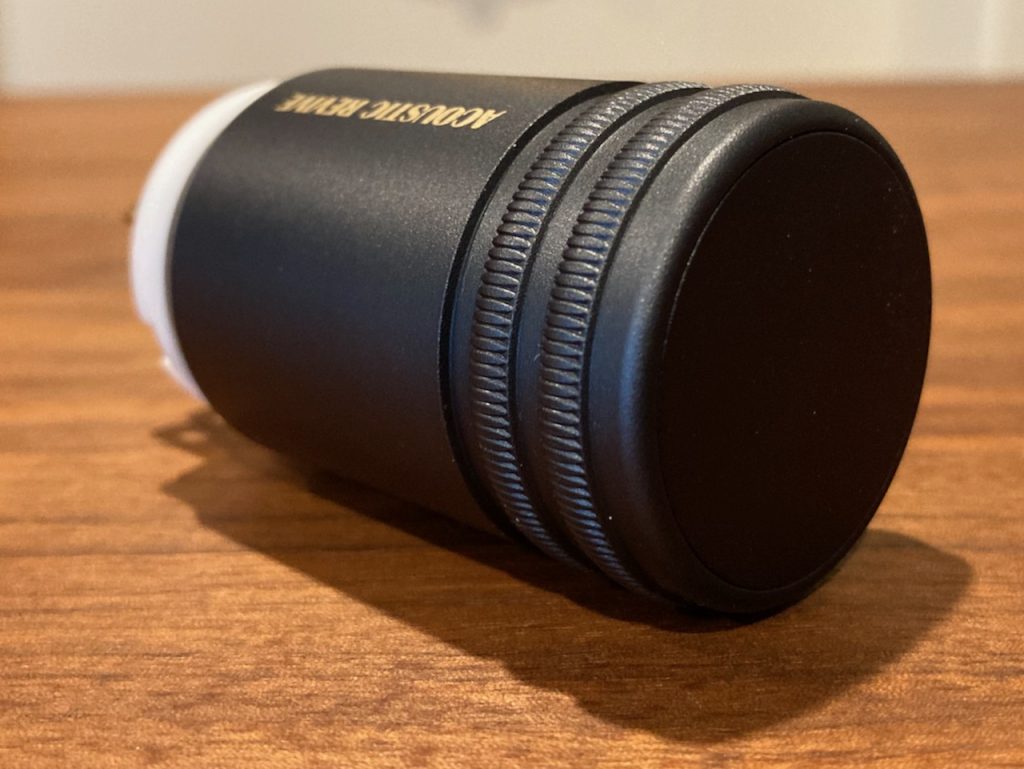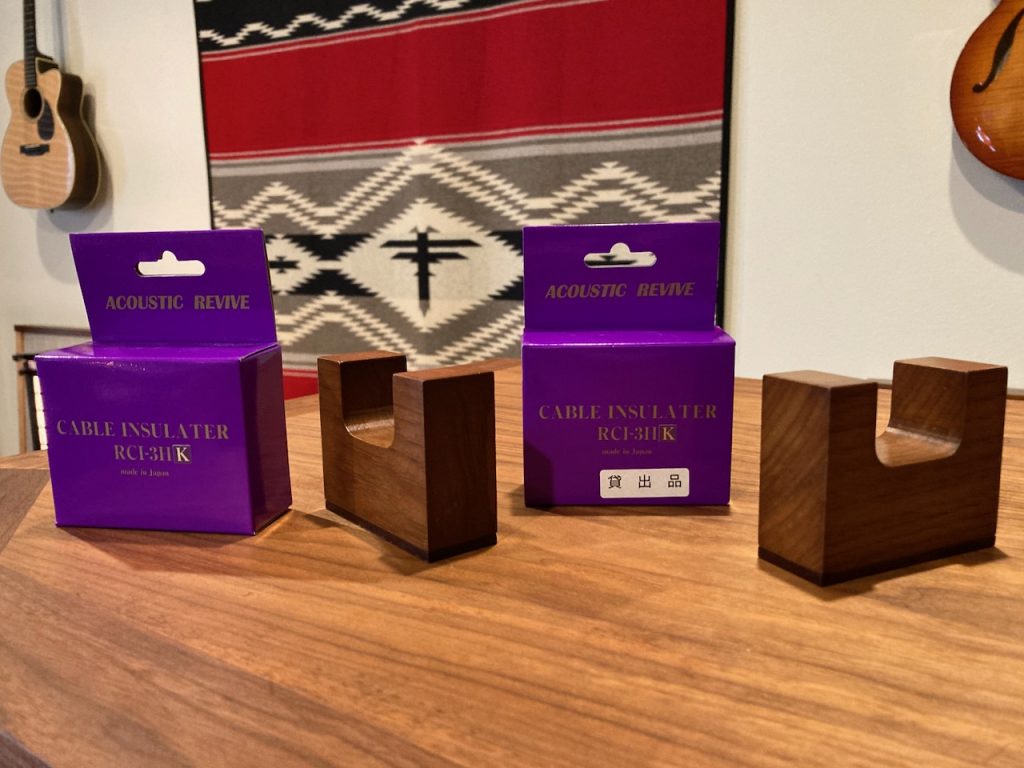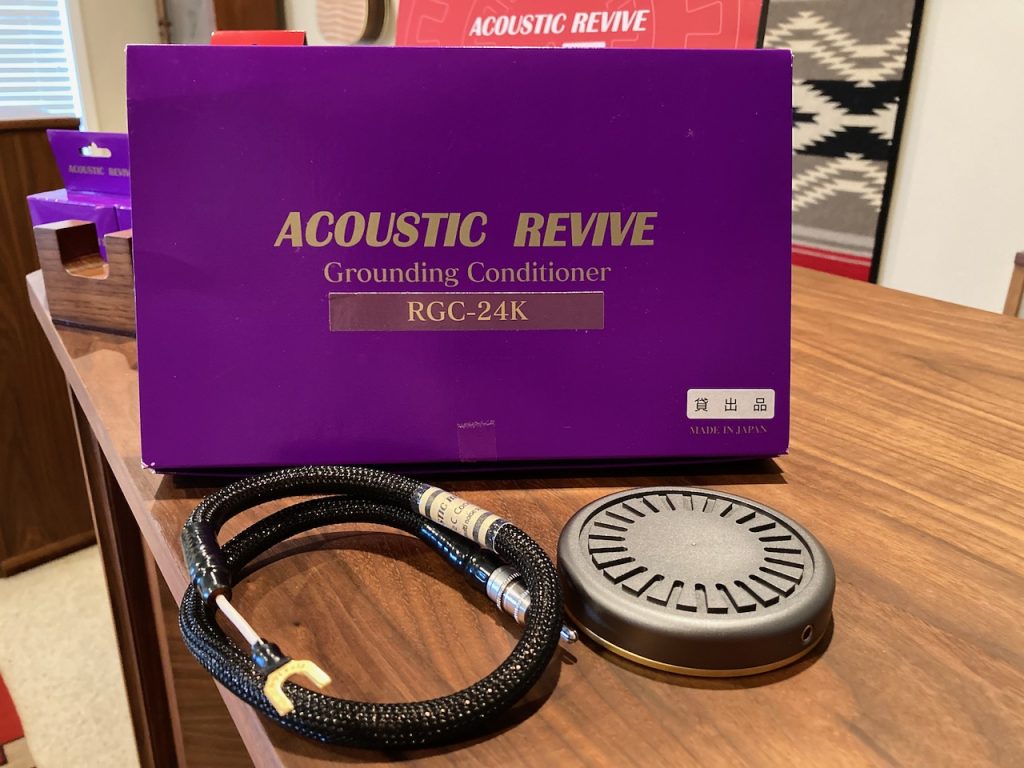Greetings friends, and let me wish you a Happy 2024! I hope you are doing well and that 2024 is your best year yet!
There was a knock on the door yesterday afternoon, and the FedEx delivery person dropped off a parcel of audio goodies sent to me by Yoshi Hontani of the
MuSon Project, Inc., the exporter of many fine audio products from Japan. Thank you Yoshi-san!
Within the parcel were a variety of
Acoustic Revive audio accessories that I'll be introducing you in this 'Today's Fresh Catch' article here at Jeff's Place, with more detailed descriptive and listening impressions to follow as I get more familiar with them, and finally culminating in a feature article about them at Positive Feedback.
Ken Ishiguro is the audio genius behind the innovative designs of the Acoustic Revive products. One thing you can always count on with Ken-san is that his accessories will be highly innovative, of the highest materials and build quality, and that they will deliver on their performance claims - that's been my experience over the years.
Speaking of years, I've had the good pleasure to experience and write about Ken-san's superb Acoustic Revive audio accessories since 2008 - 16 years now! (see the archives
HERE for the full list of articles about Acoustic Revive products).
In fact I've written more about Acoustic Revive products over the years than I have about the products of any other audio company - 14 feature articles - that's a lot!
What you'll also notice in my articles here at Jeff's Place and Positive Feedback is that most of those Acoustic Revive products are still in my audio systems after many years because I like what they do in my hi-fi systems performance-wise.
That long-haul presence is an endorsement in itself, as only the audio products that I really, really, like stay in my hi-fi systems for the long term, and these Acoustic Revive products have stood the test of time now over many years.
My
Chapter 15 of the Acoustic Revive Chronicles article will include coverage of the
RTS-30 turntable mat, the
RHS-1 headshell, the
RHR-1 room tuning devices (which has already received an award from the prestigious MJ Audio Technology journal in Japan), the
CS-3K outlet stabilizer, the
RGC-24K grounding conditioner (an updated version of the grounding conditioner that I've written about previously), and the
RCI-3HK cable lifts.
As I write more about each of these Acoustic Revive accessories here at Jeff's Place & Positive Feedback, in addition to the introductory descriptions of them below, I'll include any additional information about their technical attributes that I receive from Ken-san, and of course my listening impressions of them, and what sort of listener might benefit the most from using them in an audio system.

Acoustic Revive RTS-30 turntable mat.
The
RTS-30 turntable mat: Ken-san's RTS-30 is what he envisions as the ultimate turntable mat.
According to Ken-san, turntable mats add a tone of their own to vinyl playback, so when you're playing back a record you are hearing what's in the record grooves plus the tonal properties the mat imparts to the playback.
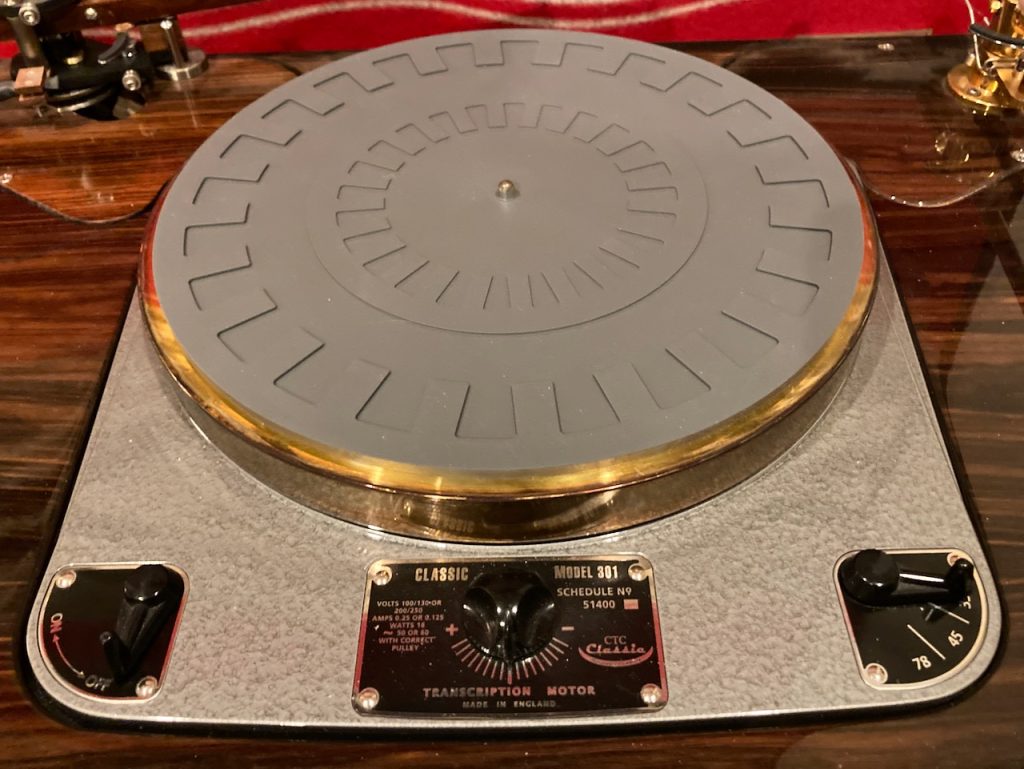
Acoustic Revive RTS-30 turntable mat on the oversize high-mass brass platter of my CTC Garrard 301.
As I understand it, Ken-san's idea with the RTS-30 turntable mat is to remove the additional tonal properties of the mat from playback, so you are hearing solely what your cartridge is retrieving from the record grooves without coloration from the mat.
To quote the website description of the
RTS-30:
"It is a turntable sheet with natural ores such as Guiyang stone and tourmaline immersed in a special vibration damping material. By engraving geometric grooves on silicon-based vibration damping materials with excellent vibration damping properties, they effectively absorb and eliminate external vibrations such as vibrations and speakers transmitted from the motor of analog players."
"In addition, the blending of natural ores generates strong negative ions, so it prevents the generation of static electricity during record playback, and as a result of exerting the surface activation effect on the record board, the S/N ratio is overwhelmingly improved, and it is freshly full of energy. It realizes smooth tone and texture, realistic and vivid three-dimensional sound image localization."
"The effect is that it extracts the information engraved on the record board as it is, far surpassing the upgrade to a super expensive cartridge."
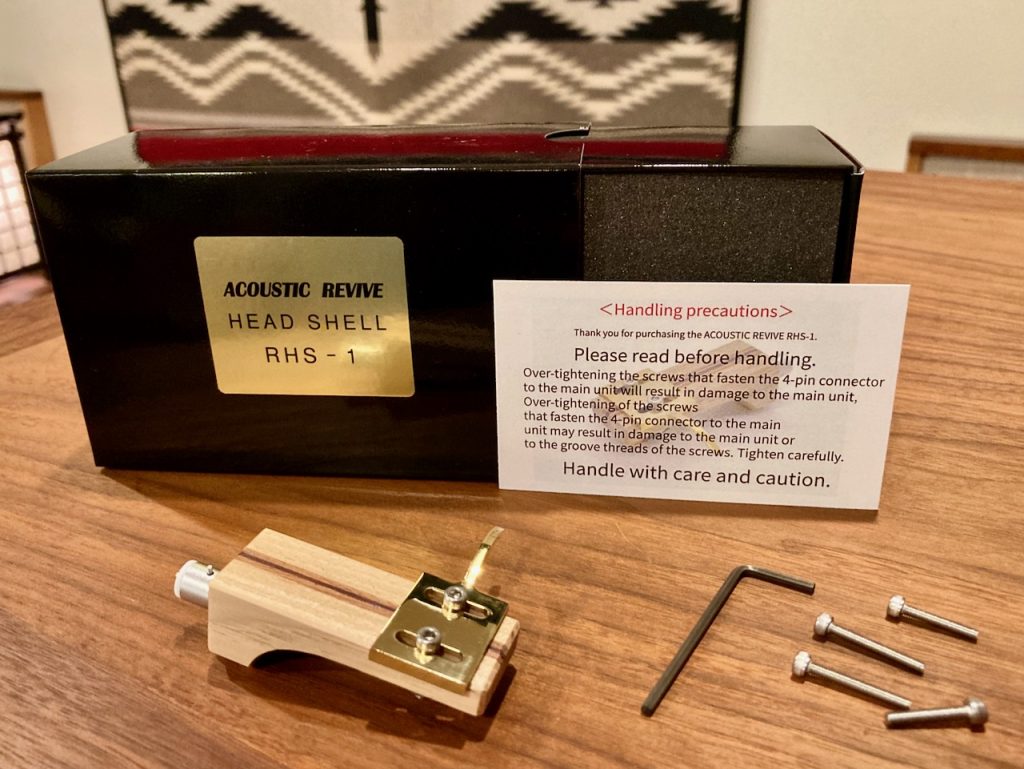
The RHS-1 headshell is the result of a collaboration between Ken-san and Shinichi Masuda (Fibonasound), who is a master artisan of headshell design.
The
RHS-1 headshell: The RHS-1 headshell is the result of a collaboration between Ken-san and Shinichi Masuda (
Fibonasound), who is a master artisan of headshell design.
One of the many things I admire about Japanese culture is their artisanal approach to elevating what would normally be considered ordinary items or activities to an art form.
It shouldn't come as a surprise that Ken-san and Masuda-san fall into this "national treasures" category for the artisanal work they do in audio, and when the two collaborate the results are impressive!
To quote from the Acoustic Revive
website:
"The body material is a beautiful design of high-grade wood that combines hickory, mahogany and rosewood."
"The lead wire is a single-wire conductor of PC-TripleC/EX, a hybrid forged conductor of silver and copper with a conductivity of 105%. In addition, most of the lead wires so far have been made of PVC (PVC) with poor dielectricity, but RHS-1 adopts Teflon insulation with excellent dielectric constant. The specific dielectric constant of PVC is 5.6 and the specific dielectric constant of Teflon is 2.2, which is nearly one-third of the value, so the transmission speed is overwhelmingly improved and the transmission loss and transmission deterioration are drastically reduced."
"Most of the pin materials of the headshell so far are made of brass, and if the conductivity of pure copper is 100%, brass has only a conductivity of 30% or less, so no matter how low impedance cartridges you use, no matter how high the conductivity leads In order to use it, a large transmission loss in the pin part was inevitable. RHS-1 also adopted a new material that is an alloy of copper and silver for this pin material, and the conductivity is almost 100%. The improvement of the conductivity of more than 70% leads to an overwhelming sound quality improvement."
"RHS-1 is a completely limited sale of only 100 pieces. As soon as 100 pieces are sold out, orders will be closed. The successor to RHS-1 will be sold in a different wood combination from Fibonasound."
The
RHR-1 room tuning devices: The RHR-21 room tuning devices are perhaps the most intriguing of this batch of Acoustic Revive accessories, and the fact that they have already received an award from the prestigious MJ Audio Technology journal in Japan elevates my level of intrigue.
The RHR-21 room tuning devices have cylindrical 'bottle' shape, and are about 6.5 inches (164mm) in height, about 2 inches (51mm) in diameter, and with each one weighing about 2 pounds (876g).
The website doesn't discuss what materials the RHR-21 room tuning devices are made of, but they appear to sand cast metal (steel?), with a series of concentric series of varied sized holes drilled into them at varying depths. On the bottom a finely machined copper or anodized steel (?) base is attached to the main cylinder with machine screws. I'll ask Ken-san to clarify what the RHR-21s are made out of.
To quote the website description:
"Although it is small, it has a standing wave elimination effect that exceeds large room tuning. RHR-1 realizes a standing wave elimination effect that far exceeds the large room tuning goods of the listening room while being small due to the special structure of the utility model patent. Just place it in places where stationar waves are easy to accumulate, such as the corner of the room, near the speaker, and the back of the audio rack, to eliminate the stationary wave, and realize high sound quality full of transparency with good visibility."
"Dramatically improve the resolution and phase characteristics of the audio playback sound! RHR-1 not only eliminates stationary waves, but also eliminates unnecessary reflections and band bias in the listening room, and as a result, the playback sound and phase characteristics of the audio are dramatically improved.
In addition, the peak of the frequency characteristics eliminates the dip, so the tone and texture of the instrument and voice are dramatically improved. Three-dimensional and clear sound image localization that cannot be realized even with the upgrade of amplifiers and speakers, and the vast sound field reproduction are realized with a fresh and smooth tone and texture."
The website doesn't say how the RHR-21 room tuning devices patented design works, so I'll ask Ken-san to elaborate a little about that if it's not a proprietary secret.
Personally, I'm not a fan of the way most room tuning products look. They're fine in a studio context where appearance doesn't matter, but in a home environment most of them look horrific stuck up on the walls and ceilings, and with large traps occupying corners.
The RHR-21 room tuning devices are actually are very attractive looking and unobtrusive. I really like that about them, and they will no doubt be a topic of discussion in any listening room they are in.
In the diagrams below you can see the positioning recommended by Acoustic Revive.
"RHR-21 installation examples ※ Please install the shallowest hole towards the listener."
The
CS-3K outlet stabilizer: I've written about earlier versions of the outlet stabilizer, so I'm interested to hear how this one compares.
From the website:
"The outlet stabilizer CS-3K has a vibration damping structure that combines multiple heterogeneous materials such as phosphor bronze, brass, aviation level aluminum alloy, and natural smoky quartz, which attenuates the resonance of the electrode of the outlet and has the rectification effect of the power supply line. It greatly improves the sound quality."
"In addition, it was also popular with the power conditioner RPC-1KM. It is equipped with a special noise reduction circuit used for noise countermeasures when developing infrared mice, and the audio system is used to absorb and annihilate high-frequency noise on the power supply line. It is possible to dramatically improve the overall S/N ratio."
"If the CS-3K is a vacant outlet, it will exert a high-frequency noise annihilation effect even if it is not near the audio system, even if it is not near the audio system."
"It is also possible to improve the performance of the clean power supply itself by attaching it to a clean power outlet such as an isolation regulator or isolation transformer."
"In addition, if you attach it to a service outlet such as a preamp, it will be possible to improve the performance of the preamp itself."
"CS-3K does not have any side effects such as sound quality habits, energy sensitivity and sound pressure attenuation like other free outlet countermeasure goods, and it can be improved to an extremely natural and vivid tone, texture and sound quality full of dynamism."
RCI-3HK cable lifts: There's no information yet on the website of this new version of the RCI cable lifts, but here's a few snippets from my article about the previous versions:
"I've never been keen on cable lifts, as I've never heard them make an audible difference in my Hi-Fi rig, but others say they have, so I try to be open minded. Before I read up on the RCI-3 Cable Insulators I just assumed that they were fancy versions of typical cable lifts whose purpose was to lift loudspeaker cables up off of the floor or carpet to help isolate them from static electricity and vibrations emanating from the floor surface, the typical claim for cable lifts."
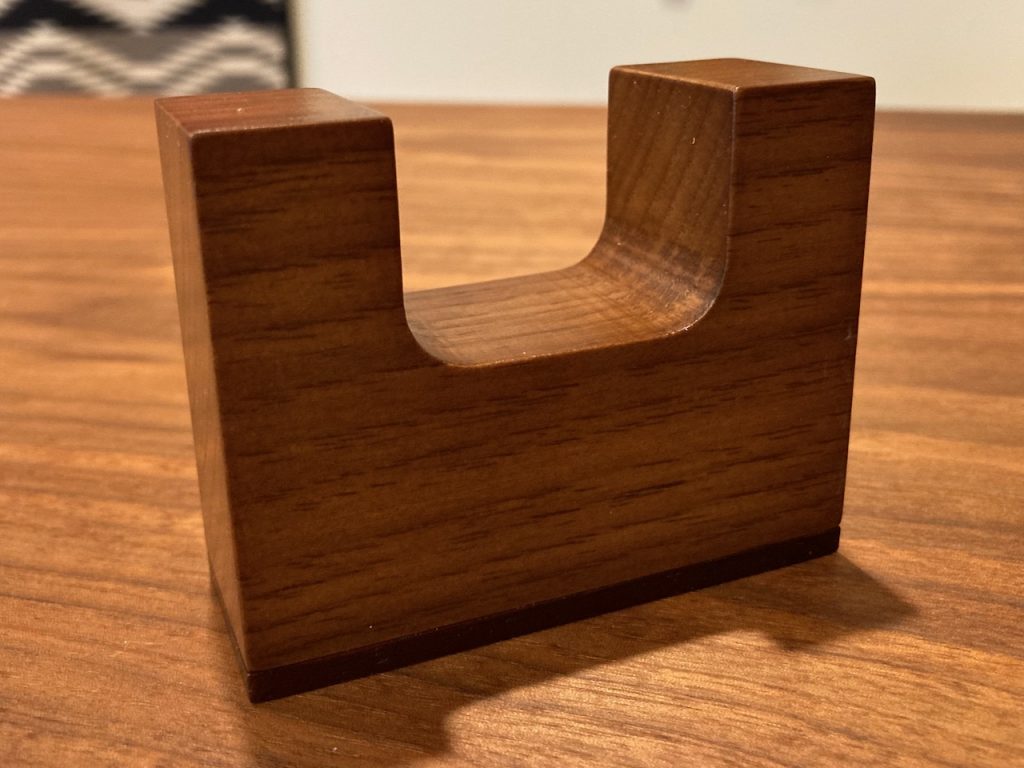
"Yet it turns out that I couldn't have been more wrong about the purpose of the RCI-3s. It turns out that the idea behind the RCI-3 Cable insulators is more akin to the principles of the CB-1DB Receptacle Base Plate, the CFRP-1F Carbon Fiber Outlet Plate, and the CS-F2 Outlet Stabilizer that I wrote about in Chapter 6, whose goal is to reduce a major vibrational pathway that most of us (well at least me, anyways) have never even realized existed: the vibration pathway from the 60Hz cycling of AC in the power grid through the AC mains connection that goes directly into each component plugged into it. I didn't really expect to hear any difference at all with the CB-1DB Receptacle Base Plate, the CFRP-1F Carbon Fiber Outlet Plate, and the CS-F2 Outlet Stabilizer installed into my outlet, yet it turned out to be a fairly big deal and an easily audible improvement."
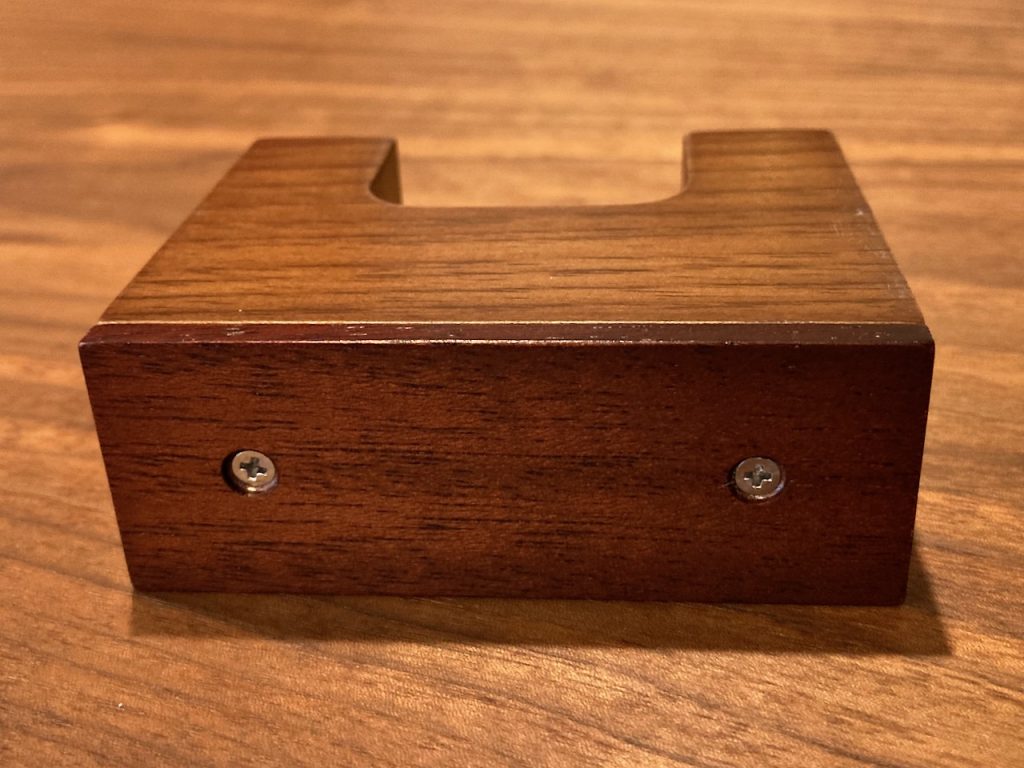
"So the purpose of the RCI-3 Cable Insulators is not to isolate speaker cables from the floor, but to reduce the transmission of loudspeaker vibration to the cables, which Acoustic Revive says degrades performance. Here's the description from the Acoustic Revive website:
"The purpose of a cable insulator is to prevent cables from being influenced by vibrations from the speaker. Most conventional cable insulators (or stabilizers) are made from a single material. So even if the cable is lifted from the floor, they will generate their own resonance which will inevitably induce coloration."
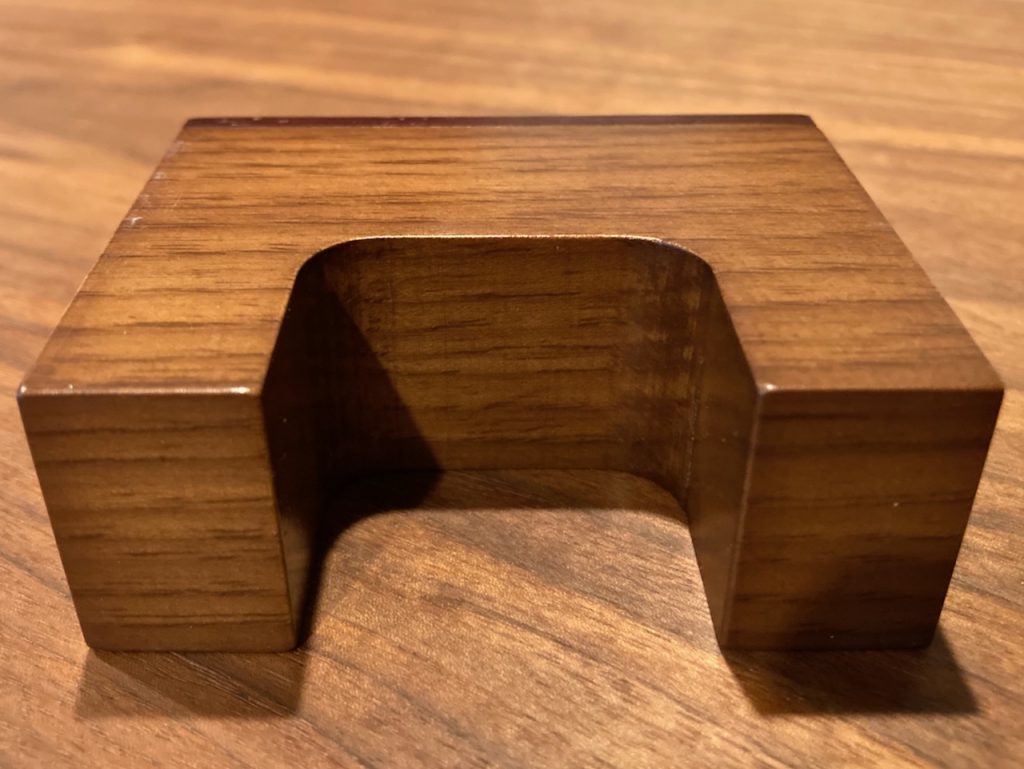
"We at Acoustic Revive have tested many materials, and as a result of these tests we decided to adopt a combination of top quality maple and ebony, which makes the sound natural and free from coloration. The cable contact surface is covered with special vibration control material for superb resonance control."
"In addition, inside the insulator is a blend of natural ores which absorb electromagnetic waves and radiated noise from the cable. Because of its combination of resonance control and noise absorption abilities, the RCI-3 will dramatically improve sound in a manner never before achieved. Noise is dramatically reduced and sound stage and imaging are more focused and three dimensional. The tone will become smoother as well."
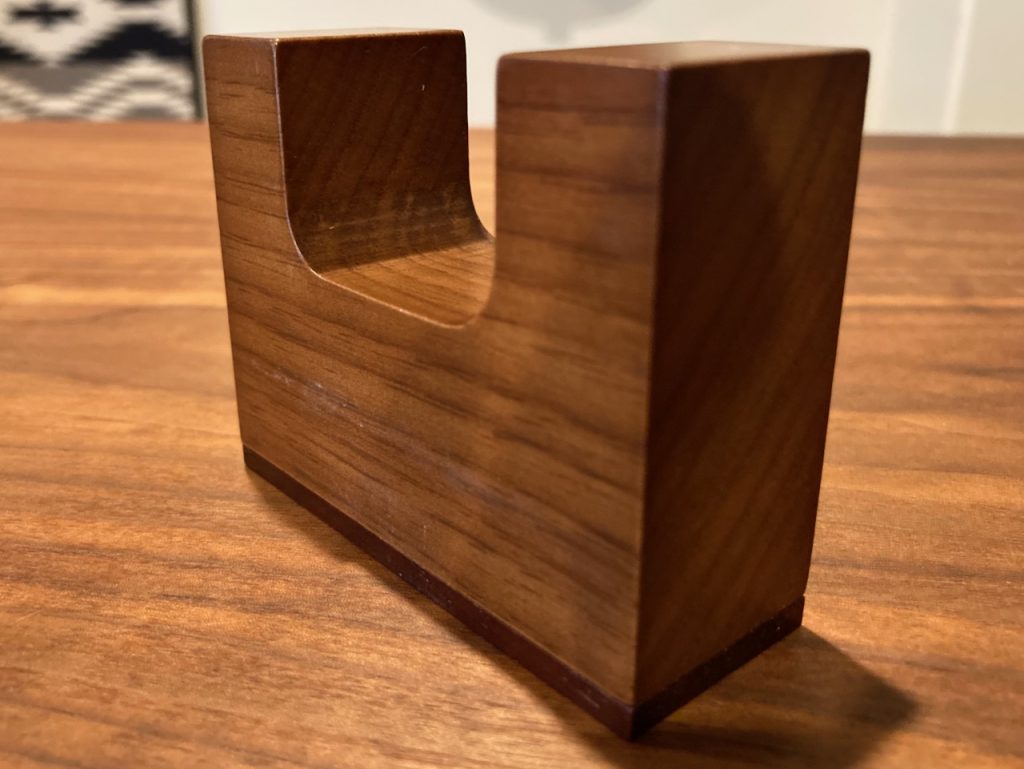
Like the previous versions of the RCI-3 cable lifts, the new RCI-3HK cable lifts are beautifully and innovatively crafted. I suspect that the difference in the new version is the mix of materials that resides within them ... perhaps a combination of Guiyang stone and tourmaline? I'll ask Ken-san for clarification about any changes that have occurred with the RCI-3HK cable lifts.
The
RGC-24K ground conditioner: The RGC-24K is a new and improved version of the RGC ground conditioner I have reviewed previously.
From the Acoustic Revive website:
"Originally, it is ideal for audio equipment to take a good quality grounding ground, but due to the residential environment, there are many people who can not draw the ground itself, and even if you draw the earth, the grounding ground itself does not have a low ground resistance, and the backflow of noise is reversed. And radio diving occurs, and in addition, if you make a mistake in how to drop the earth of each device, it will cause an earth loop and generate hum noise, and on the contrary, the sound quality is often deteriorated."
"RGC-24K is a virtual earth device that creates a virtually ideal ground environment, adjusts the chassis potential and electric field generation state of audio equipment, and significantly improves the sound quality by stable operation of the circuit."
"The inside of the main body is a built-in blend of several types of natural ore with negative electric potential, and by connecting the attached cable to the audio equipment, the electric potential and electric field of the device are dropped inside the RGC-24 main body."

Photo courtesy of the Acoustic Revive website.
"Even if you are already in an environment where the ideal grounding ground is drawn, it is possible to further improve the sound quality by using RGC-24K."
"RGC-24K is the original existence of virtual earth, but in recent years, many virtual earth products imitating RGC-24K have been sold."
"However, most other virtual earth products are made cheaply, such as only metal boxes and wooden boxes with just sand, and most of them do not have the most important low electric potential and ground resistance value as a virtual earth. The reason why RGC-24K functions as a virtual earth is that the blend of natural ores enclosed inside realizes extremely low electric potential and ground resistance values."
"In other virtual earths where the low electric potential and ground resistance value are not taken, it is not possible to move the electric potential of the audio equipment to reduce the electric potential and electric field value, and the ground wire will become an antenna and, on the contrary, the quality will deteriorate, so you need to be careful."
"In addition, there are products that allow multiple ground wires to be connected to one virtual earth, but like the ground earth, by connecting multiple earth wires to the audio system, an earth loop is generated, and on the contrary, the electric potential and electric field value are raised. There are cases where the quality has been deteriorated by put away. RGC-24K does not occur in such a ground loop, so you can use it with confidence."
"This time, we newly adopted the same structure as the highest-grade series of single-core cables for the attached ground cable of the RGC-24K. Change the conductor from the previous PE insulated PCOCC-A elliptical single wire to Teflon-insulated PC-tripleC elliptical conductor, natural silk cushioning material and Teflon coating flexible copper tube shield, carbon CSF tube, the highest grade Losiu It has exactly the same material and structure as our single-core cable advanced machine such as the moplated banana plug RBN-1, so it blocks the external noise that jumps in from the ground wire, and furthermore, the audio machine is equipped with Finemet beads. It even removes the noise moving from the vessel to the virtual earth."
"RGC-24K is effective in adopting these overwhelming main bodies and cable materials and structures that far exceed the cost and large virtual earth devices. The grounding environment of the connected audio equipment is in place, and the S/N ratio and sound quality are dramatically improved by stabilizing the circuit operation. The sound image localization is three-dimensional and extremely clear with no oozing and blurring. The sound field expands both left and right, depth, and height, and the outlook is very good by cleaning up the noise. The texture and tone will also be natural and realistic, and the sense of dynamism, energy, and dynamic range will also be improved."
Well, ok, like usual Ken-san's accessories are innovative and ultra-high quality in their construction.
I can't necessarily comment about how these Acoustic Revive devices function from a technical perspective, but I'll describe to you what I hear - if anything - from them as I get familiar with them during listening sessions.
That's it for today, but there will be much more to come about these Acoustic Revive accessories!
As always, thanks for stopping by, and may the tone be with you!







